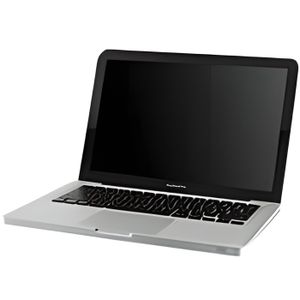
- MACBOOK INTEL CORE 2 DUO INTEL GMA HOW TO
- MACBOOK INTEL CORE 2 DUO INTEL GMA INSTALL
- MACBOOK INTEL CORE 2 DUO INTEL GMA UPDATE
- MACBOOK INTEL CORE 2 DUO INTEL GMA UPGRADE
- MACBOOK INTEL CORE 2 DUO INTEL GMA FULL
OS X loaded in roughly half the time, around 25 seconds or so (I believe it used to take 48-50 seconds). Luckily, everything was done properly and I was greeted with the Apple chime. If you have any questions along the way, the forums are a great place to get help. For the rest of the procedure, this guide will prove indispensable.
MACBOOK INTEL CORE 2 DUO INTEL GMA HOW TO
For the beginner I recommend checking out this video from OWC to learn how to remove the Intel Mac Mini's cover and drive cage. Explaining this is a little hard but when you come to the point of doing this, you will understand.įrom here on out it was just a matter of reconnecting things and putting screws back in. I used pliers to grip each post and push it in until I heard a distinctive click when the hook had expanded. Do not do one at a time - try to push in two opposing, yet not adjacent, posts at the same time while applying light pressure to the middle of the die to keep things steady. This is why it is of supreme importance to hold the heatsink steady while fastening each post. This means that it is actually possible to crack the CPU die without much effort. If you have worked with Pentium 4s or AMD Athlon 64s before, you will notice that there is no heatspreader on the Core Duo as there as those processors have. However the hardest part was getting the 4 posts with the powerful springs to attach the heatsink to the motherboard. This is why most MBP's have high temperatures.Īll of what I've said so far only took about 5 minutes - if you are comfortable with working on your computer like this it's an easy procedure. The MacBook Pros suffer from a case of too much thermal paste as someone discovered upon disassembling their MacBook Pro. You only need a very small amount, too much can actually hurt thermal transfer from the processor to the heatsink. Alternatively you can use a thermal paste called Ceramique that has similar thermal properties and is not electrically conductive. In addition, Arctic Silver 5 is electrically conductive so you won't want any of it getting on other parts of the motherboard. DO NOT get Arctic Silver 5 on your hands, it is a huge pain to remove and can stain carpets if you drop any. After drying that off, I locked in the new processor and evenly applied a thin layer Arctic Silver 5 thermal paste to the CPU die.

At this point I disconnected the thermal sensor cable from the motherboard and scrubbed the heatsink with acetone and alcohol to get rid of the old thermal paste. After that you can remove the old processor, discharging yourself to some grounded object before handling it, and put in the new processor. On the socket itself, there is a small metal screw which you rotate half a turn counter-clockwise to unlock the processor. When removing the heatsink, you should be careful not to yank it off because there is a thermal sensor adhered to it which you don't want to remove from the heatsink. The springs are extremely powerful on these posts so if you're not careful they will shoot across the room after you've disconnected them from the motherboard. I flipped the motherboard upside down and used pliers to lightly pinch the hooks of each of the four white posts that hold on the heatsink. Remove the four screws around the side of the case, the fan cable, the drive cage, the airport antenna, the metal standoff on the lower left corner, the LED cable, the power switch cable and then pull out the motherboard.
MACBOOK INTEL CORE 2 DUO INTEL GMA FULL

MACBOOK INTEL CORE 2 DUO INTEL GMA INSTALL
MACBOOK INTEL CORE 2 DUO INTEL GMA UPGRADE
Now, not being one to give up on these things lightly, a little investigation reveals a simple method of getting the installer to run and upgrade this hardware.

MACBOOK INTEL CORE 2 DUO INTEL GMA UPDATE
As soon as these are removed (from Software Update and the like), then the solution will falter. This solution works, as long as binaries included with the OS include 32-bit. The discussion here is actually about supporting 32-bit vs.


 0 kommentar(er)
0 kommentar(er)
